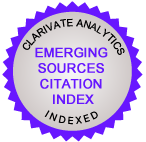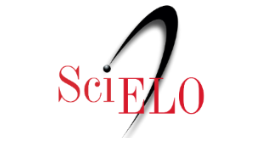Analysis and proposal to update TVN public mission
-
Valerio Fuenzalida Fernández
 vfuenzal@uc.cl
vfuenzal@uc.cl
Downloads
DOI:
https://doi.org/10.4067/S0718-48672019000100315Abstract
This article is an analysis and a proposal to renew the social mission of TV channel Chilean National Television (TVN), as the public TV channel to serve Chilean citizens. It is written from a personal view of the author, who has worked for 40 years in TV (12 of them in TVN). He now works as an academic in the school of Communications at the Catholic University in Chile, focused in public TV and TV for Children. The proposal intends to emphasize some subjects for decision making to confront an untenable crisis.
Palabras Clave
ÁVILA C. 2017. Comunicación de gobierno en el populismo latinoamericano: El caso de Rafael Correa, Ecuador (tesis de doctorado). Pontificia Universidad Católica de Chile, Santiago, Chile. https:// repositorio uc.cl/handle/1534/21604
BECERRA M. y Waisbord S. 2015. Principios y “buenas prácticas” para los medios públicos en América Latina. Cuadernos de Discusión de Comunicación e Información 3. París. UNESCO.
FUENZALIDA V. 2000. La Televisión Pública en América Latina. Reforma o Privatización. Santiago: Fondo de Cultura Económica.
FUENZALIDA V. 2002. The Reform of National Television in Chile. En: Latin Politics, Global Media. Fox E. & Waisbord S. (eds.). Austin: University of Texas Press.
FUENZALIDA V. 2005. Expectativas educativas de las audiencias televisivas. Bogotá: Ed. Norma.
FUENZALIDA V. 2006. La reforma de TVN en Chile: logros y problemas. Indrajit Banerjee y Kaling Seneviratne (eds.). En: Radiotelevisión de Servicio Público: Un Manual de Mejores Prácticas. San José de Costa Rica: Oficina de la UNESCO para América Central.
FUENZALIDA V. 2007. Reconceptualización de la Entretención ficcional televisiva. Fronteiras. IX (1) 45-54. Porto Alegre: Universidad de Unisinos.
FUENZALIDA V. 2008. El Docudrama televisivo. MATRIZes. Ano 2 N° 1, p. 159-171. São Paulo: Programa de Pós-Graduação em Ciências da Comunicação da USP.
FUENZALIDA V. 2016. La Nueva Televisión Infantil. Santiago: Fondo de Cultura Económica.
HALLIN D.C. & Mancini P. 2004. Comparing Media Systems. Cambridge University Press.
JAUSS H.R. 1982. Interaction Patterns of Identification with the Hero. En: Aesthetic Experience and Literary Hermeneutics. Minneapolis: University of Minnesota Press.
MARSCHALL S. 2002. El parlamento en la sociedad de medios – interacción entre el debate parlamentario y mediático. En: Priess F. (ed.). Relación entre Política y Medios. Propuestas alemanas en una perspectiva comparada. Buenos Aires: KAS.
MULGAN Geoff. 1990. Television‘s Holy Grail: Seven Types of Quality. En: The Question of Quality. Mulgan Geoff (ed.). BFI. London
SOUKUP P. 2014. Political Communication. Communication Research Trends, vol. 33 N°2. Santa Clara: Santa Clara University.
SUNKEL G. & Geoffroy E. 2001. Concentración económica de los medios de comunicación. Santiago: LOM Ediciones.
URIBE R. 2007. Redefiniendo y Reivindicando la presencia de la Emocionalidad en la Comunicación Social. La Función Política de la Televisión. Tendencias, contenidos y desafíos en el Chile de hoy. Secretaría de Comunicaciones. Santiago: Palacio La Moneda.
VALIDA CHILE. Boletines de Circulación y Lectura. Valida-Chile.cl
WAISBORD S. 2018, Why Populism is Troubling for Democratic Communication. Communication Culture & Critique 11 (2018) 21–34. Downloaded from https://academic.oup.com/ccc/article-abstract/11/1/21/4953072 by guest; on 27 March 2018.
Similar Articles
- Fernando Matias Ramirez Llorens, Reaching the furthest corner of Argentina. History of the national radio and television council – CONART (1957-1970) , Perspectivas de la Comunicación: Vol. 16 No. 2 (2023): July - December
- Dominique Manghi, Patricia Ceroni Piña, Giovanna Montaner Chichizola, “The Best Chilean Highschool,” quality in public education and its semiotic representations in dispute , Perspectivas de la Comunicación: Vol. 15 No. 1 (2022): January - June
- Matías Gómez Contreras, Felipe González López, Gaps in the political information consumption in Chile: television, press, and social media (2011-2019) , Perspectivas de la Comunicación: Vol. 15 No. 1 (2022): January - June
- Nicolás Del Valle Orellana, Bastián González-Bustamante, Political agenda, journalism and digital media in Chile. Research notes on informative pluralism , Perspectivas de la Comunicación: Vol. 11 No. 1 (2018): january - august
- Javier Abuín-Penas, Claudia Montero Liberona, How does the Chilean Ministry of Health communicate about cancer? Analysis of Facebook and Instagram posts from 2018 to 2023 , Perspectivas de la Comunicación: Vol. 16 No. 2 (2023): July - December
- Pablo Manuel Impelluso-Cortés, José Patricio Pérez-Rufí, Formal audiovisual analysis in the opening sequence of the television series: the audiovisual collage in Godfather of Harlem (MGM+, 2019-) , Perspectivas de la Comunicación: Vol. 17 (2024): January - December
- Maria Magdalena Walker, Politicians in Chilean television: to be or not to be in morning shows , Perspectivas de la Comunicación: Vol. 17 (2024): January - December
- Salomé Sola-Morales, Dra., Carla Quiroz, Mg., Representation of the role of women in the Chilean government discourse (1990-2016) , Perspectivas de la Comunicación: Vol. 11 No. 1 (2018): january - august
- Natalia Raimondo Anselmino, Alejandro Sambrana, Ana Laura Cardoso, José Rostagno, Paratextual and paralinguistic resources in the fanpages of the Argentine newspapers Clarín and La Nación. Attributes of press discourse in social networking sites , Perspectivas de la Comunicación: Vol. 12 No. 2 (2019): July - December
- Pablo Matus, Magdalena Vitores, Claudia Ramírez Friderichsen, Generic frames on the front covers of the Chilean press related to the social outbreak of 2019 , Perspectivas de la Comunicación: Vol. 17 (2024): January - December
1 2 3 4 5 6 7 8 9 10 11 12 > >>
You may also start an advanced similarity search for this article.
Downloads
Published
How to Cite
Issue
Section
License
- Proposed policy to offer Open Access Journals
Authors who publish with this journal agree to the following terms:
a) Authors retain copyright and grant the journal right of first publication with the work simultaneously licensed under a Creative Commons Attribution Attribution (CC -BY 4.0) ![]() that allows others to share the work with an acknowledgement of the work's authorship and initial publication in this journal.
that allows others to share the work with an acknowledgement of the work's authorship and initial publication in this journal.
b) Authors are able to adopt licensing agreements for the non-exclusive distribution of the journal's published version of the work (for example, to post it to an institutional repositories or publish it in a monograph), with an acknowledgement of its initial publication in this journal.
c) Authors are allowed and encouraged to post their work online (For example, in institutional repositories or on their website) prior to and during the submission process, as it can lead to productive exchanges and increase the citation of published work (See The Effect of Open Access).











